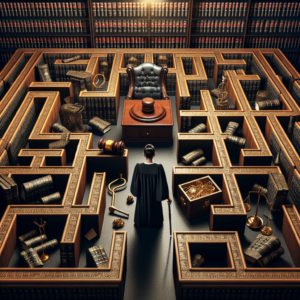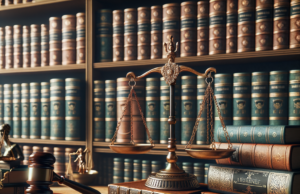Breaking Developments: Shocking Updates in Ongoing Criminal Investigations
In recent weeks, the landscape of criminal investigations has been dramatically reshaped by a series of shocking developments. High-profile cases that have gripped the nation are now experiencing breakthroughs, as new evidence and key witnesses emerge, prompting law enforcement agencies to reassess their strategies. This article delves into the latest updates in ongoing criminal investigations, exploring the implications of these developments for the justice system and the communities affected.
Recent Breakthroughs in High-Profile Criminal Cases: What We Know So Far
Several high-profile criminal cases have seen significant breakthroughs recently, reigniting public interest and media scrutiny. Notably, the investigation into the unsolved murder of a prominent local figure has taken a new turn following the arrest of a suspect who had previously evaded law enforcement. Authorities have indicated that this suspect may have connections to a larger criminal network, suggesting that the case could be part of a more extensive investigation into organized crime. Additionally, the reopening of cold cases, such as the infamous 1990s serial killings, has been prompted by advancements in technology and renewed public interest, leading to a reevaluation of evidence that had long been considered stagnant.
Key Witnesses Come Forward: Implications for Ongoing Investigations
The emergence of key witnesses in several ongoing investigations has raised the stakes for law enforcement and legal teams alike. In one notable case, a former associate of a suspect has stepped forward, providing critical testimony that could corroborate existing evidence and potentially implicate others involved in the crime. This development underscores the importance of witness cooperation in criminal investigations, as firsthand accounts can significantly influence the direction of a case. However, the decision of witnesses to come forward also raises concerns about their safety and the potential for retaliation, prompting law enforcement to implement protective measures for those willing to testify.
New Evidence Emerges: How Forensic Science is Shaping Case Outcomes
Forensic science continues to play a pivotal role in shaping the outcomes of criminal investigations, with new evidence emerging that could alter the trajectory of several cases. Recent advancements in DNA analysis and digital forensics have allowed investigators to re-examine old evidence with fresh eyes. In one case, a previously discarded piece of evidence was subjected to advanced DNA testing, revealing a match to a suspect who had not been on the radar of investigators. Such breakthroughs not only provide critical leads but also highlight the evolving nature of forensic science, which is increasingly becoming a cornerstone of modern criminal investigations.
Law Enforcement Strategies: Innovative Approaches to Solving Cold Cases
In light of recent developments, law enforcement agencies are adopting innovative strategies to tackle cold cases that have remained unsolved for years. One approach gaining traction is the use of collaborative task forces that bring together resources and expertise from multiple jurisdictions. This strategy has proven effective in cases that span state lines, allowing for a more comprehensive investigation. Additionally, law enforcement is leveraging technology, such as artificial intelligence and data analytics, to identify patterns and connections that may have previously gone unnoticed. These innovative approaches not only enhance the chances of solving cold cases but also foster a sense of community involvement in the pursuit of justice.
Legal Ramifications: Recent Court Rulings Impacting Criminal Investigations
Recent court rulings have had significant implications for ongoing criminal investigations, particularly concerning the admissibility of evidence and the rights of defendants. In a landmark decision, a state supreme court ruled that certain types of digital evidence obtained without a warrant could be deemed inadmissible in court. This ruling has prompted law enforcement agencies to reassess their investigative techniques, ensuring that they adhere to constitutional protections while still pursuing justice. Furthermore, the legal landscape is evolving as courts grapple with balancing the need for effective law enforcement with the rights of individuals, leading to ongoing debates about privacy and surveillance in the digital age.
Public Response: Community Reactions to Shocking Developments in Crime Cases
The recent developments in high-profile criminal cases have elicited a strong response from the public, with communities expressing a mix of relief, outrage, and concern. Many residents have taken to social media to voice their opinions, sharing their thoughts on the implications of new evidence and witness testimonies. Community forums and town hall meetings have also emerged as platforms for discussion, allowing residents to engage with law enforcement and legal representatives. While some community members express hope that these developments will lead to justice, others voice skepticism about the effectiveness of the criminal justice system, highlighting the need for transparency and accountability in ongoing investigations.
As the landscape of criminal investigations continues to evolve, the recent breakthroughs and developments serve as a reminder of the complexities involved in the pursuit of justice. With new evidence, key witnesses, and innovative strategies coming to the forefront, the potential for resolution in long-standing cases is greater than ever. However, the challenges posed by legal ramifications and public sentiment underscore the need for a balanced approach that respects the rights of individuals while striving for accountability. As these cases unfold, the eyes of the nation remain focused on the pursuit of truth and justice.
























